February 2021

February 2021
In the days approaching the New Year, stampedes zip through the grocery aisles of local Korean marts in Dallas with eyes on one item: a bag of frozen, coin-shaped rice cakes. The first year my family moved to a Texan suburb more than a decade ago, we made the rookie mistake of strolling into the store the day before Seollal only to be met with a barren freezer. Since then, we’ve assimilated into a Korean church where the social identities of many immigrant families are forged. It became custom to eat tteokguk twice a week for ― once on the Sunday before the New Year’s holiday inside the church’s gym court that doubled as a cafeteria and a second time on the morning of at home with family.
Written by
Grace Moon
Photographed by
Studio Kenn
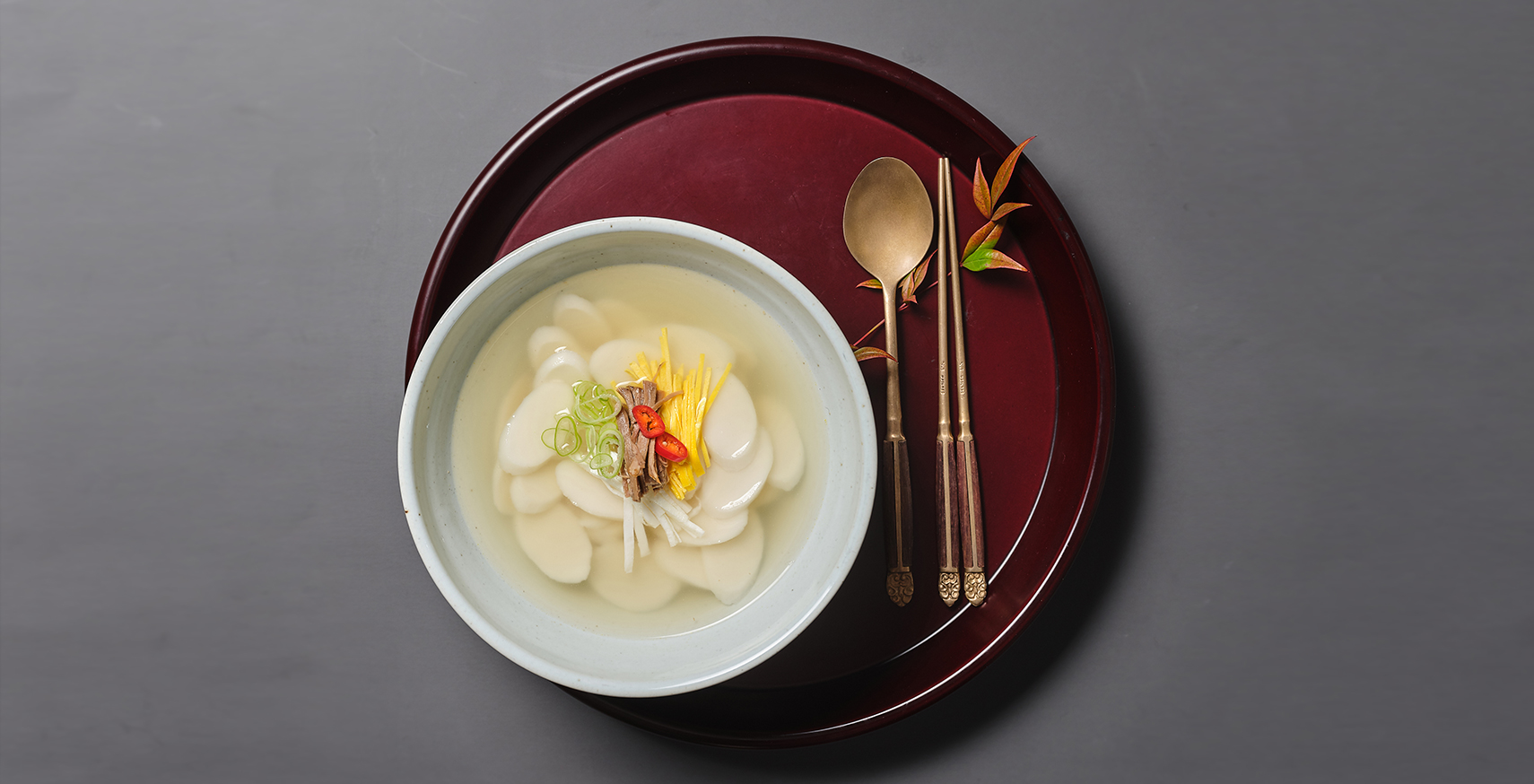
I was fortunate to live in a neighborhood in the South with a flourishing Korean community, where most laundromats and doughnut shops in town were operated by Korean immigrants. Some friends in neighboring states had to commit to an entire road trip for hours, sometimes traversing borders, to reach the closest Korean mart, whereas we had not one, but the luxury of access to two mega Koreatowns half an hour away.
Though I never understood why we were served tteokguk every New Year’s Day, I learned to find comfort in the ritual. There was a reassuring certitude that I would rise in the morning to the familiar sight of my mom rowing her wooden ladle in clear beef broth singing to herself. Come the evening ― or morning in KST (Korean Standard Time zone), my parents coerced my younger brother and I to recite the same phrase “saehae bok mani badesaeyeo,” every year to our grandparents, shoving the landline phone to our ears. I’d fumble with the word order and have to scribble the romanization on a scrap of paper. Sometimes it felt less a blessing than a nuisance, a meaningless nine-syllable phrase, a mandatory formality.
After having lived in contrasting
time zones, I sat to
hear her story.
It wasn’t until I arrived in Korea with two suitcases in summer 2019 when phone calls were substituted with live recitations ― this time, without glancing at my cheatsheet) at my grandparents’.
Just at the advent of the coronavirus in January last year when everyday life hadn’t come to a halt yet, I took the train to my paternal grandmother’s house on the 1st. After spending my lifetime of being located in days and nights contrasting one another’s, I sat with Kim Hee-Jeong and partook in her tteokguk, her story.
My grandmother was born in 1939 in Pyongyang, when there was no such concept as “North Korea” as a separate country and people. When she tells me her stories today, seven decades later, she holds onto only slivers of memory during her elementary years having left at the tender age of 13, her words trickling out like an antique radio that barely crackles.
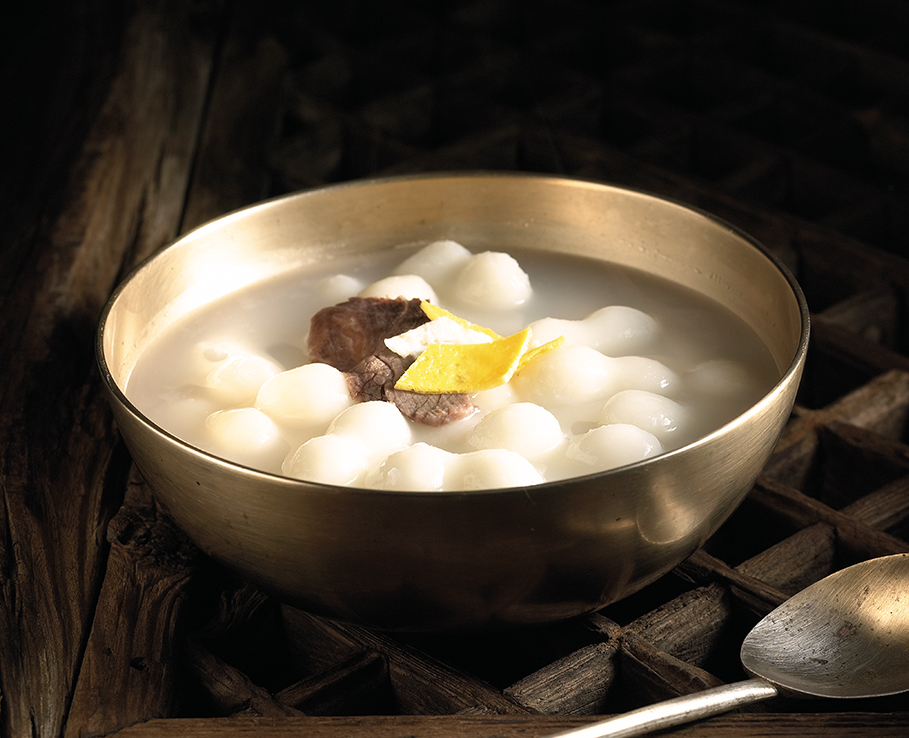 © imagetoday
© imagetoday
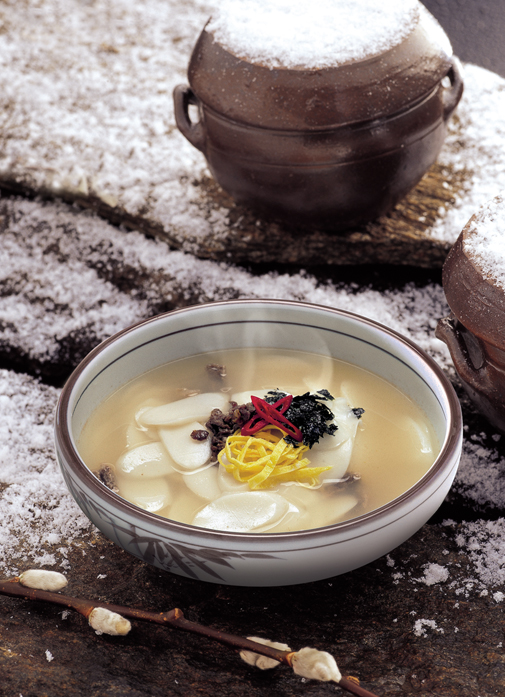 © imagetoday
© imagetoday
“On Seollal, the people of Pyongyang ate manduguk,” she said, referring to dumpling soup. “For each bowl, we’d plop three or four plump pouches with mildly seasoned kimchi and mung bean sprouts, then squeeze out all the excess water in a block of tofu, crumble it with our hands and pack that in too.” Pyongyang was colder, so her family kept three large hang-ari (fermenting jars) of kimchi buried outside and it would stay frozen all winter. They’d also leave wooden boards with pre-made dumplings out, grab a handful whenever their stomachs beckoned, while darting back and forth between the kitchen and the garden.
But on Seollal, my grandma would squat in a large circle next to her mother, aunt and cousins as the small but mighty army of women would make around 500 dumplings in one sitting while guests trickled in and out all day to pay their respects and perform sebae. “But no one does that anymore in apartment complexes. And now no one comes,” she tells me, and I suddenly feel the shift in her imaginary, from past to present and what I question may be an unbridgeable gap in between.
When my grandfather speaks of his hometown, his voice suddenly adopts a sense of dignity. Of the boons in my life, one of the more uncommon is having one grandparent from each side who grew up in the North. On my mother’s side is Park Jong-Chan, who was born in Kaesong, roughly a two-hour drive from Pyongyang.
“It’s a grand city,” he states, reminding me that it was once the capital of Korea until 1392. In Kaesong on New Year’s, my grandfather ate neither oval-shaped rice cakes nor dumplings. Instead, I learn that Kaesong is home to its own regional version called joraeng-i tteokguk that's filled with joraeng-i (as per its appearance resembling two small circles) tteok (rice cake) which ― my grandfather describes as a pair of dumbbells, my mother the body of a snowman.
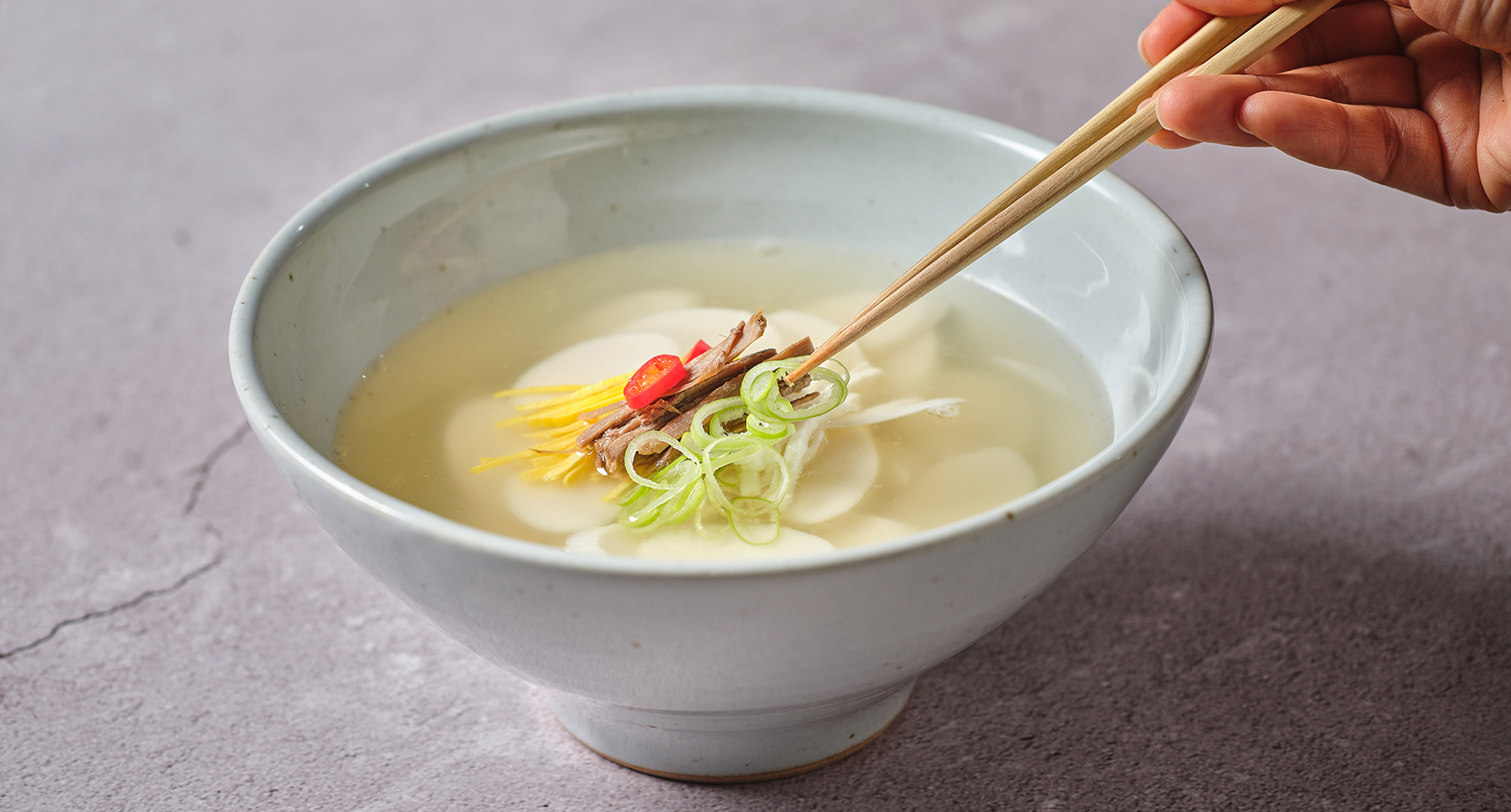
His mother, or my great grandmother who died before I entered the world, would press a thin, single chopstick in the middle of the white tteok, rolling her palm against the stick back and forth until two full circles formed, nimbly repeating the process until she had enough to feed a household.
Even after his family left behind their home during the war, the six of them continued to make joraeng-i tteokguk while living in the basement of a relative in Seoul. “People who came from the North were often teased as country bumpkins,” he said. “But on every New Year’s, your great grandmother would still keep alive the tradition of making joraeng-i tteok till the day she died.”
This year, people swapped visits to the countryside with gift packages delivered to loved ones. There wasn't much to do or plan ahead for given the unrelenting virus waves testing the spirits of the nation as Korea surpassed its one-year mark of living with the coronavirus.
When I call Kim Heeyehn, a curator at the Tteok Museum in central Seoul, she finally teaches me why I ate tteokguk every New Year’s. “We also can refer to tteokguk as cheomsaebyeong,” Kim says. When breaking down each Hanja (Chinese script), I learn that it roughly translates into a rice cake that adds on a year. “Partaking in one bowl of tteokguk, in other words, is equivalent to aging one year. The oval rice cakes that you find in your soup are sliced from a long, chewy tube of garaetteok which symbolizes longevity, as the round-shaped tteok resembles brass coins, alluding to hope for riches,” Kim explains. And when I ask her what distinguishes tteokguk in the North from the South and if the dish has changed after the Korean War, she tells me it’s not possible to use such a standard given the sheer vastness of the dish among individual regions, even towns, today.
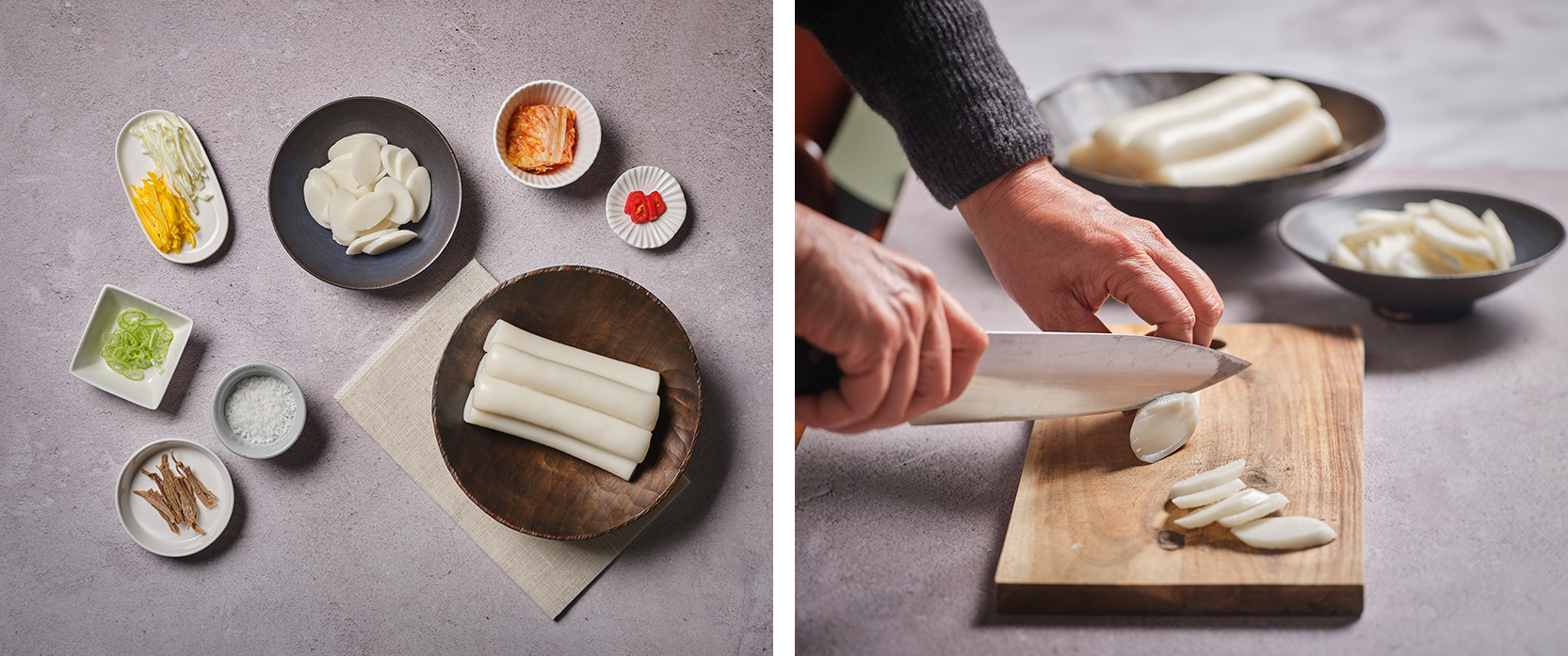
To make sikhye, the steamed rice must sit in hot (not boiling) water where it brews before it is eventually boiled, releasing the natural sweetness from its carbohydrate-rich ingredients. This process ferments the rice, causing enzymes to convert the starch into sugar.
In Chungcheong-do Province, people knead non-glutinous rice powder in a way that resembles sujebi as the tteok is likewise torn apart and served. Instead of a beef broth, many in Jeolla-do Province swap it out for a heartier chicken base broth. The version I grew up eating from a frozen package is a variant, as too, were my grandmother’s plump dumplings and grandfather’s little snowmen. Kim says the dish above all encapsulates the spirit of the Korean people who, despite whatever residue remains from the preceding year, bury their faces into a bowl of white rice cakes ― a metaphorical invitation to all who partake in the meal to begin anew with a clean slate.
The tradition my grandparents were surrounded by ― at a time manual labors of love strenuously shaped each and every tteok for 50 guests, or jars of kimchi were kept underground for optimal freshness ― may no longer be practicable, especially in small Seoul apartments that my grandparents live in today.
Kim says that preserving every tradition is unrealistic. “Doing so would take an incredible amount of painstaking effort… though what matters is that come New Year’s Day, people for some reason always think of tteokguk. There’s a desire in our hearts, a craving and expectation to eat this soup as a collective. And that’s what has kept this tradition so alive. ”